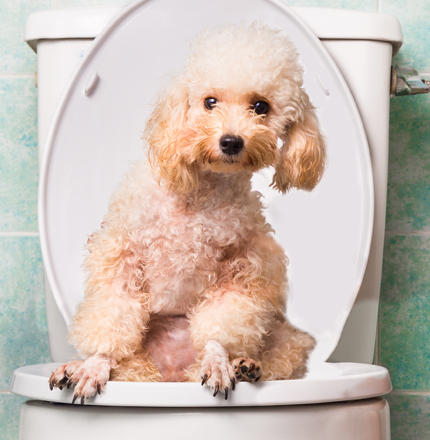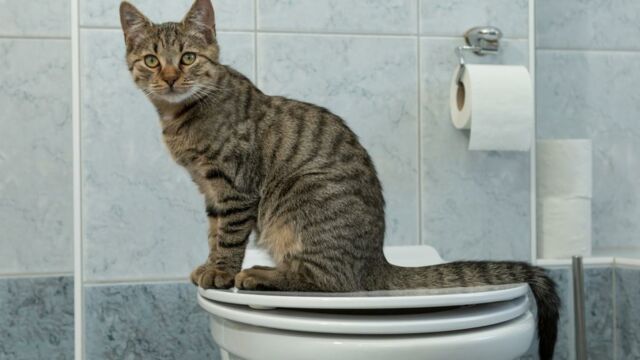Top Explanations to Steer clear of Flushing Animal Waste Down the Toilet
Top Explanations to Steer clear of Flushing Animal Waste Down the Toilet
Blog Article
They are making a number of good observations on Should you flush animal waste down the toilet in general in this content followed below.

When it involves taking care of waste, specifically animal waste, lots of people usually resort to the practical alternative of flushing it down the commode. However, this relatively simple solution can have severe repercussions for the atmosphere and public health. In this article, we'll check out why flushing pet waste down the commode is a negative concept and give alternative methods for proper disposal.
Intro
Proper waste disposal is crucial for keeping ecological sustainability and public health. While it may appear harmless to flush animal waste down the commode, it can result in numerous concerns, both for the setting and human wellness.
Threats of flushing animal waste
Environmental impact
Flushing animal waste presents unsafe germs and pathogens into waterways, which can negatively influence marine environments. These microorganisms can pollute water sources and harm marine life, interrupting fragile communities.
Public health worries
Pet waste consists of unsafe microorganisms such as E. coli and Salmonella, which can present severe wellness dangers to people. Flushing pet waste down the commode can infect water products, leading to the spread of conditions and infections.
Alternatives to flushing
Instead of purging pet waste down the toilet, there are several different disposal approaches that are a lot more eco-friendly and hygienic.
Composting
Composting pet waste is an eco-friendly way to deal with it. By composting, raw material is broken down right into nutrient-rich soil, which can be used to feed gardens and plants.
Landfill disposal
Disposing of pet waste in a landfill is another alternative. While not as environmentally friendly as composting, it is a more secure choice to flushing, as it protects against the contamination of water resources.
Family pet waste disposal systems
There are specific pet garbage disposal systems available that securely and hygienically deal with animal waste. These systems frequently utilize enzymes to break down waste and remove smells.
Steps to proper pet garbage disposal
To ensure proper disposal of animal waste, adhere to these actions:
Scooping and nabbing waste
Routinely scoop and bag pet waste making use of eco-friendly bags. This stops waste from contaminating the setting.
Making use of designated waste bins
Dispose of bagged pet waste in assigned waste bins, such as compost bins or land fill containers. Prevent flushing it down the bathroom at all costs.
Cleansing can and pet locations routinely
Consistently tidy can and animal areas to stop the buildup of waste and bacteria. Use pet-safe cleaning products to preserve health.
Benefits of appropriate disposal approaches
Adopting correct disposal approaches for pet waste provides several benefits:
Minimized environmental pollution
Correct disposal techniques minimize the risk of environmental pollution, securing waterways and ecological communities from contamination
Lessened threat of water contamination.
By avoiding flushing pet waste down the toilet, the risk of water contamination is substantially minimized, safeguarding public health.
Improved cleanliness and health
Correct disposal approaches here advertise far better sanitation and hygiene, creating a more secure setting for both human beings and pets.
Verdict
Finally, purging pet waste down the bathroom is dangerous to the atmosphere and public health. By embracing alternate disposal approaches and complying with appropriate waste management practices, we can decrease the unfavorable effect of animal waste and add to a cleaner, much healthier planet.
What To Do With Dog Poo – The Do's And Don'ts Of Disposing Of Faeces
Dog poo bins
Some councils provide dedicated dog waste bins in popular dog-walking areas that can take dog poo that has been bagged but you can legally dispose of dog waste in any public litter bin, as long as it is securely bagged. This also applies to your wheelie bin at home.
Do not flush
Water companies do not recommend flushing dog faeces down the toilet because certain parasites can survive the water processing treatment and are potentially harmful to humans. You should also never consider flushing dog poo that has been bagged down the toilet as the bags will not break down and instead create severe blockages in the sewage system.
In the woods
The Forestry Commission promotes a ‘stick and flick’ method for dealing with waste in the woods. This means finding a stick and using it to flick any poo from off the path so that it is out of the way of other walkers. You could also bury it as long as it is not in an area where there might be livestock.
Livestock
Parasites found in dog poo can be transmitted to livestock if they inadvertently eat infected faeces that has been left on grazing land. This could result in the death of sheep or abortion in cattle so you should always make sure you pick up your dog’s waste in fields where livestock could be present.

Consistently tidy can and animal areas to stop the buildup of waste and bacteria. Use pet-safe cleaning products to preserve health.
Benefits of appropriate disposal approaches
Adopting correct disposal approaches for pet waste provides several benefits:
Minimized environmental pollution
Correct disposal techniques minimize the risk of environmental pollution, securing waterways and ecological communities from contamination
Lessened threat of water contamination.
By avoiding flushing pet waste down the toilet, the risk of water contamination is substantially minimized, safeguarding public health.
Improved cleanliness and health
Correct disposal approaches here advertise far better sanitation and hygiene, creating a more secure setting for both human beings and pets.
Verdict
Finally, purging pet waste down the bathroom is dangerous to the atmosphere and public health. By embracing alternate disposal approaches and complying with appropriate waste management practices, we can decrease the unfavorable effect of animal waste and add to a cleaner, much healthier planet.
What To Do With Dog Poo – The Do's And Don'ts Of Disposing Of Faeces
Dog poo bins
Some councils provide dedicated dog waste bins in popular dog-walking areas that can take dog poo that has been bagged but you can legally dispose of dog waste in any public litter bin, as long as it is securely bagged. This also applies to your wheelie bin at home.
Do not flush
Water companies do not recommend flushing dog faeces down the toilet because certain parasites can survive the water processing treatment and are potentially harmful to humans. You should also never consider flushing dog poo that has been bagged down the toilet as the bags will not break down and instead create severe blockages in the sewage system.
In the woods
The Forestry Commission promotes a ‘stick and flick’ method for dealing with waste in the woods. This means finding a stick and using it to flick any poo from off the path so that it is out of the way of other walkers. You could also bury it as long as it is not in an area where there might be livestock.
Livestock
Parasites found in dog poo can be transmitted to livestock if they inadvertently eat infected faeces that has been left on grazing land. This could result in the death of sheep or abortion in cattle so you should always make sure you pick up your dog’s waste in fields where livestock could be present.

As a fervent person who reads about 4 Reasons Why Dog Poop Cleanup is Important, I imagined sharing that post was really helpful. Kindly set aside a second to share this post if you enjoyed it. Thank you for taking the time to read it.
Order Repair Report this page